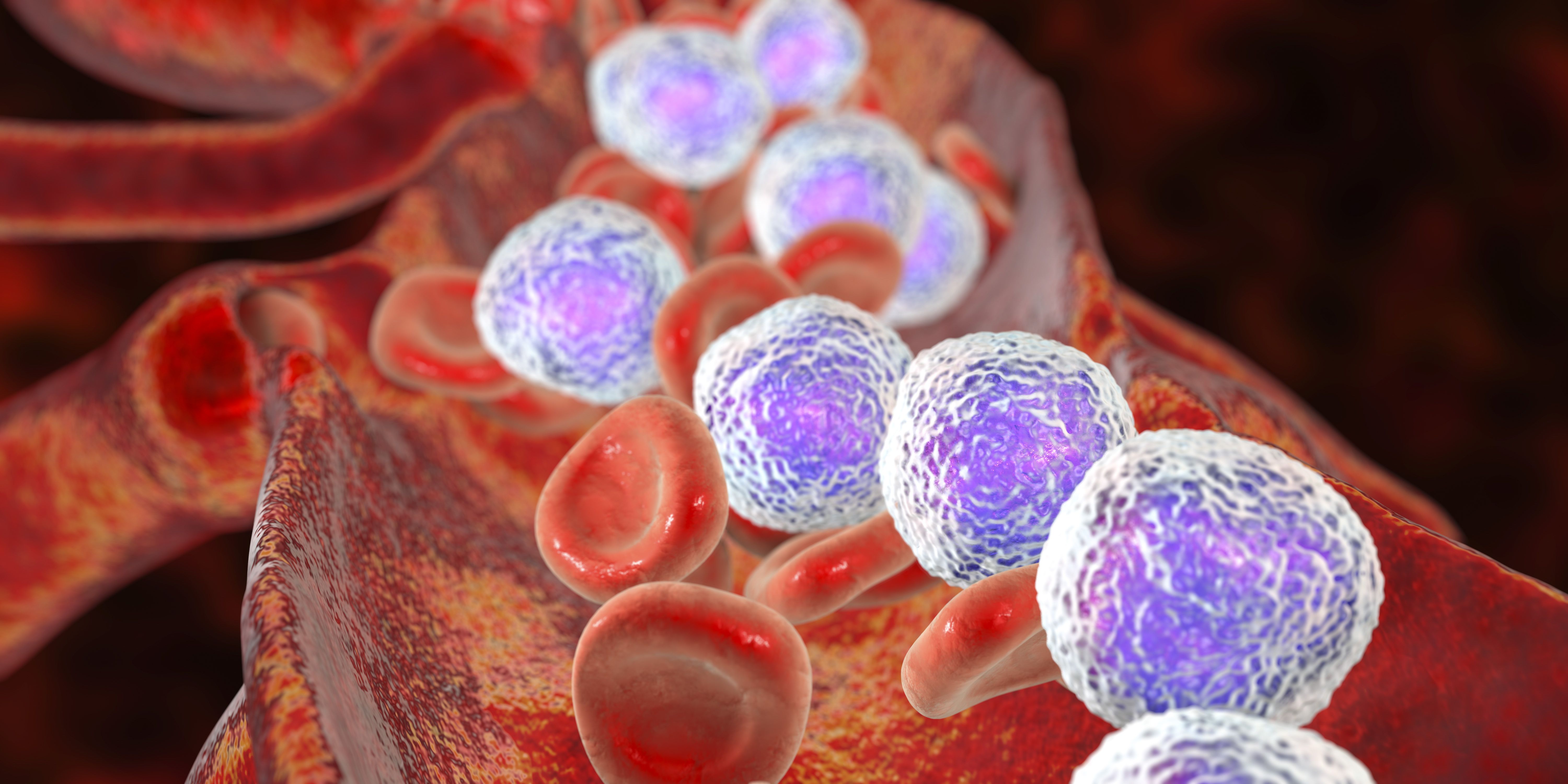Obe-Cel Receives Positive CHMP Opinion for R/R B-Cell ALL
The positive CHMP opinion is based on results from the phase 1b/2 FELIX trial evaluating obe-cel in relapsed/refractory B-cell ALL.
Data from the trial revealed that the remission rate for patients who received at least 1 obe-cel infusion was 77%, including 55% who had complete remission and 21% who had a CR with incomplete hematologic recovery.

The European Medicines Agency’s Committee for Medicinal Products for Human Use (CHMP) has recommended the approval of obecabtagene autoleucel (obe-cel; Aucatzyl) as a treatment for patients 26 years and older with relapsed/refractory B-cell precursor acute lymphoblastic leukemia (ALL), according to a news release from the drug’s developer, Autolus Therapeutics.1
The decision is supported by results from the phase 1b/2 FELIX trial (NCT04404660)evaluating obe-cel in relapsed/refractory B-cell ALL that were published in the New England Journal of Medicine.2 Data from the trial revealed that the remission rate for patients who received at least 1 obe-cel infusion (n = 127) was 77% (95% CI, 67%-85%), including 55% (95% CI, 45%-66%) who had complete remission (CR) and 21% (95% CI, 14%-31%) who had a CR with incomplete hematologic recovery. Both prespecified null hypotheses of the overall-remission end point of 40% or less (P <.001) and the complete-remission end point of 20% (P <.001) or less were rejected.
“This positive CHMP opinion is a welcome advancement for physicians and patients in Europe, faced with treating [relapsed/refractory] adult [patients with B-cell] ALL with a poor prognosis,” FELIX lead Investigator Claire Roddie, MD, PhD, FRCPath, associate professor of Haematology at the University College London (UCL) Cancer Institute, said in the news release.1 “Obe-cel’s combination of favorable tolerability and potential long-term outcomes could offer an important new treatment option for patients in the EU.”
At a median duration of follow-up of 21.5 months (range, 8.6-41.4), the median duration of response among patients who received at least 1 obe-cel infusion was 21.2 months (95% CI, 11.6-not evaluable [NE]). The median event-free survival (EFS) was 11.9 months (95% CI, 8.0-22.1), with estimated 6- and 12-month EFS rates of 65.4% and 49.5%, respectively. Furthermore, the overall survival (OS) among patients who received at least 1 infusion was 15.6 months (95% CI, 12.9-NE), with respective estimated 6- and 12-month OS rates of 80.3% and 61.1%.
Of patients enrolled in the phase 1b/2 FELIX study (n = 153) with relapsed/refractory B-cell ALL, 26 of 153 patients did not receive an obe-cel infusion, including 1 due to physician’s choice, 7 due to manufacturing failure, and 18 due to death or uncontrolled disease. An additional 4 patients did not receive full obe-cel dosage due to low manufacture yield.
The first dose of obe-cel was administered either as 10 x 106 CAR T cells (59.8%) or 100 x 106 CAR T cells (40.2%). Both planned obe-cel doses were administered in 94.5% of patients who received obe-cel, with the remaining 5.5% forgoing the second dose due to immunotoxic effects (n = 3)—including 2 instances of grade 3 higher immune effector cell–associated neurotoxicity syndrome (ICANS) and 1 instance of grade 3 cytokine release syndrome (CRS)—cerebrovascular-related death (n = 1), a manufacturing-related issue (n = 1), and rapid disease progression (n = 2).
Among those treated with at least 1 obe-cel dose, a total of 92.9% of patients received prior bridging therapy, and 63.0% received prior chemotherapy alone. The median percentage of bone marrow blasts was 40.0% (range, 0%-100%), with less than 5% of blasts in 28.3%, 5% to 20% in 12.6%, and 59.1% of patients with more than 20%. The median patient age within this group was 47.0 years (range, 20-81), 52% were male, 74% of patients were White, and 63% were confirmed non-Hispanic.
The primary end point of the trial was overall remission. Secondary end points included EFS, OS, and safety.
Among responders with minimal residual disease (MRD) data available (n = 62), 94% had MRD-negative status following obe-cel infusion, with 96% of patients having less than 5% bone marrow blasts without extramedullary disease before lymphodepletion with MRD data (n = 28) achieving MRD negativity. Furthermore, 18% of patients in the intention-to-treat population with responses received allogenic stem cell transplantation.
In total, CRS events occurred in 68.5% of patients treated with obe-cel, 2.4% of which were grade 3 or higher. The median time to CRS onset was 8 days (range, 1-23) after infusion, with a median duration of 5 days (range, 1-21). Additionally, 2 instances of immune-effector cell-associated hemophagocytic lymphohistiocytosis were observed, both of which were grade 3 or higher.
ICANS was observed in 22.8% of patients who received at least 1 obe-cel dose, 7.1% of which was grade 3 or higher. The median time to ICANS onset was 12 days (range, 1-31) after infusion, with a median duration of 8 days (range, 1-53).
Obe-cel received FDA approval as a treatment for patients with relapsed/refractory B-cell ALL in November 2024.3
References
- Autolus Therapeutics announces positive CHMP opinion for obecabtagene autoleucel for adult patients (age 26 and older) with relapsed or refractory B-cell precursor acute lymphoblastic leukemia (R/R B-ALL). News release. Autolus Therapeutics plc. May 23, 2025. Accessed May 23, 2025. https://tinyurl.com/7nyrbyb4
- Roddie C, Sandhu KS, Tholouli E, et al. Obecabtagene autoleucel in adults with B-Cell acute lymphoblastic leukemia. N Engl J Med. 2024;391(23):2219-2230. doi:10.1056/NEJMoa2406526
- FDA approves obecabtagene autoleucel for adults with relapsed or refractory B-cell precursor acute lymphoblastic leukemia. News release. FDA. November 8, 2024. Accessed May 23, 2025. https://shorturl.at/PIUIf